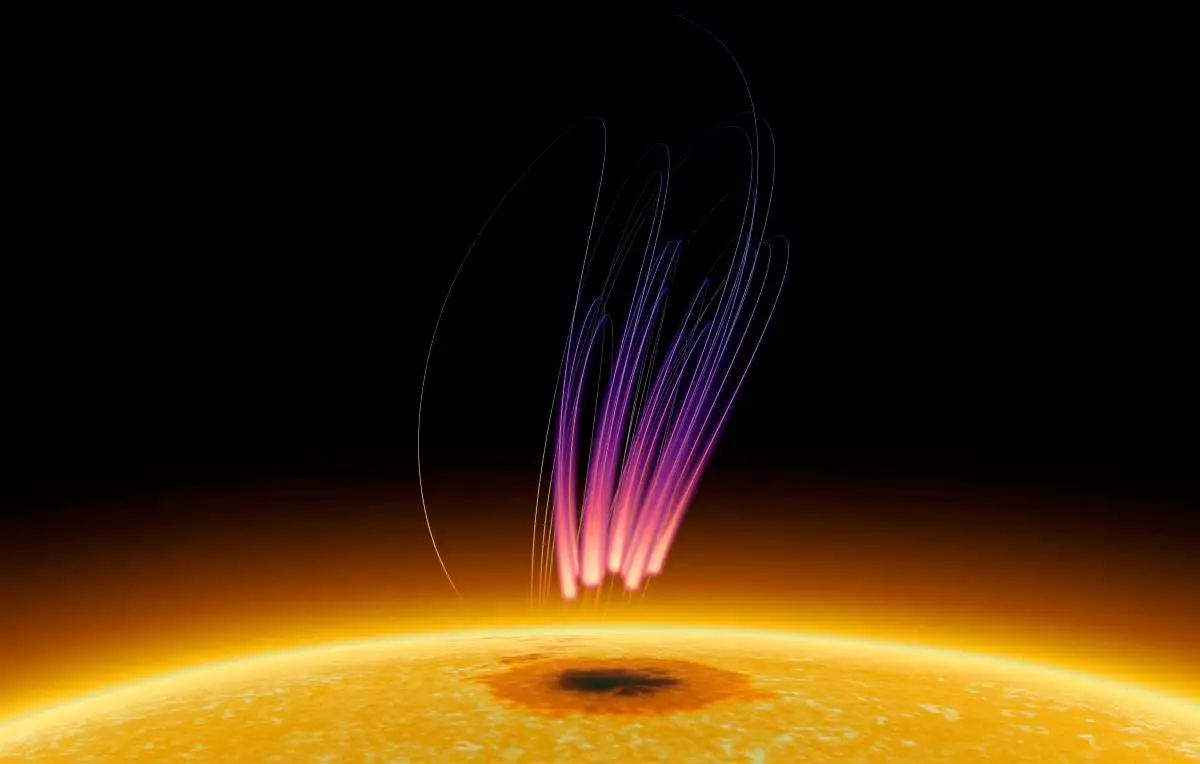There is mysterious auroras over the sunspot.
There is some suspicion that also the Sun can have an aurora-like phenomenon. The thing that creates aurora on Earth's magnetosphere is high energy particles that hit the atmosphere atoms. A similar phenomenon is on planet Mercury, in which a weak magnetosphere captures particles around it. The power of those impacts is higher than on Earth. And the high energy impacts between ions make X-ray flares near that planet.
The power of those impacts is enough high that those X-ray auroras are forming on the Mercury magnetosphere. Also, the electromagnetic fields of the sun capture ions around. Those ions can travel around the sun by following the magnetic power lines. And when some protuberance or flare hits those ions, that causes a very high-power impact.
Scientists uncover prolonged radio emissions above a sunspot, akin to those previously seen in the polar regions of planets and certain stars, which may reshape our understanding of intense stellar radio bursts. Credit: Sijie Yu. (ScitechDaily.com/Mysterious Aurora-Like Radio Emissions Uncovered Above a Sunspot)
The radio wave aurora just above the sunspot can help to uncover the secrets of sunspots.
The sunspot is a darker area on the sun. The reason for the darker color is 1500 degrees lower temperature. So something takes energy out from those points. When the sun is active there are lots of sunspots. One reason for that could be beam-like photons or some other particle beam that leaves the sun's nucleus.
There is the possibility that the shining gas around the photon burst can push it into the thick beam. Or maybe those things could be electrons or ions. Then those beams can act like heat pumps that transmit energy out from those points. So could that thing be the X-ray area radiation?
Those impacts cause radio waves and X- or gamma-ray bursts in the inner corona. If gas orbits the sun, and the high-energy plasma travels through that orbiting gas it causes a very powerful impact. And most of the plasma travels out from the sun from sunspots. The sunspot is a colder area on the sun. The temperature at that point is about 1500 degrees lower than other places in the photosphere. (Wikipedia, sunspot). And that means something is taking energy out from that point.
The main theory of formation of those darker areas is escaping plasma that takes energy out from that point is the reason for sunspots or darker areas of the sun. The position of that mystery aurora-like phenomenon just above the sunspot supports that theory.
"Although the details of sunspot formation are still a matter of ongoing research, it is widely understood that they are the visible manifestations of magnetic flux tubes in the Sun's convective zone projecting through the photosphere within active regions". (Wikipedia, sunspot)
"Their characteristic darkening occurs due to this strong magnetic field inhibiting convection in the photosphere. As a result, the energy flux from the Sun's interior decreases, and with it, surface temperature, causing the surface area through which the magnetic field passes to look dark against the bright background of photospheric granules". (Wikipedia, sunspot).
The thing is that researchers think that the flares and some other phenomena in the sun are behind sunspots. The high solar activity and its connection with sunspots is confirmed. When the sun is highly active the number of sunspots is high. So something takes energy out from those darker areas that are 1500 degrees colder than the areas around them.
https://scitechdaily.com/bepicolombos-first-mercury-flyby-unmasks-electron-rain-as-trigger-for-x-ray-auroras/
https://scitechdaily.com/mysterious-aurora-like-radio-emissions-uncovered-above-a-sunspot/
https://scitechdaily.com/mercurys-mystical-magnetosphere-mio-spacecraft-reveals-chorus-waves-and-x-ray-aurora/
https://en.wikipedia.org/wiki/Sunspot




No comments:
Post a Comment
Note: Only a member of this blog may post a comment.